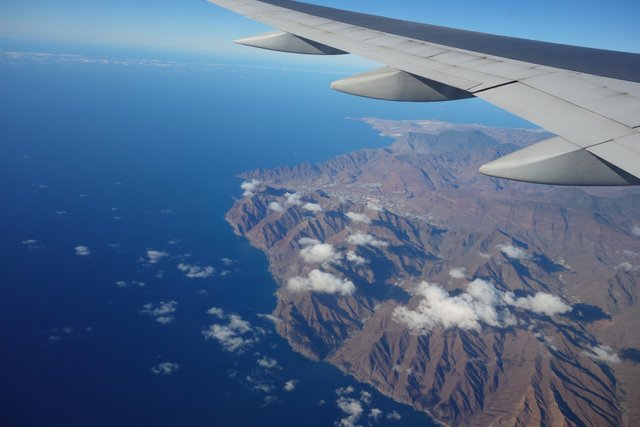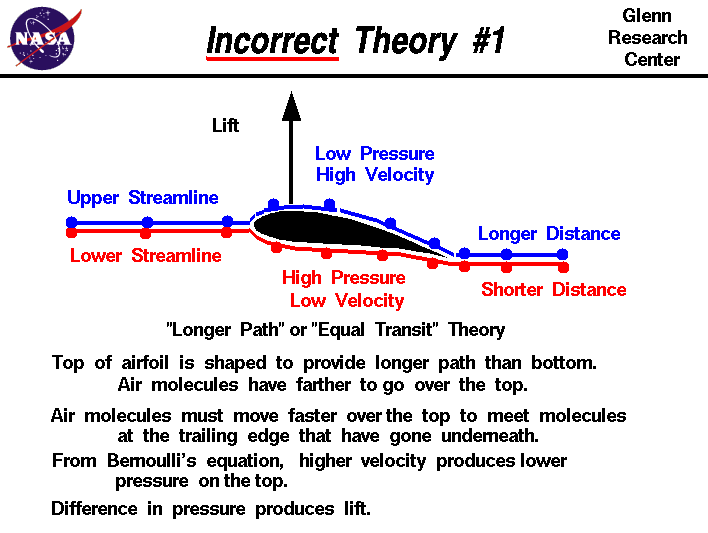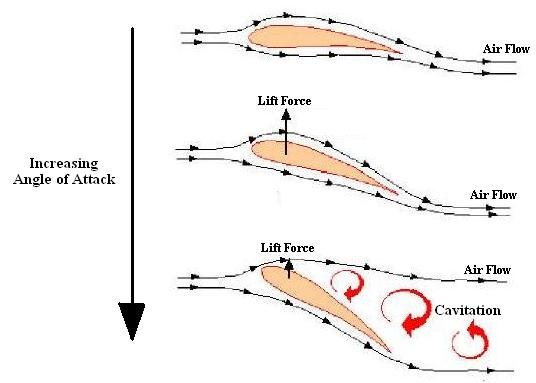The Myth Of Flying - What You Were Taught In School Is Wrong
Can you explain why an aircraft flies and name the forces that play a role to keep it up in the air?

Most people will come up with the following explanation, which is in virtually every school textbook:
The airstream approaches a wing, where it splits with half of it flowing above and the other half flowing beneath the wing. Then comes the "magic assumption", imposing that both partial airstreams have to meet again at the end. Because of the curved nature of the upper profile, the air then has to flow faster on the top to reach the wingtip at the same time. According to Bernoulli, faster flowing air creates a lower pressure zone which generates the lift. This is referred to as the 'Longer Path' theory and seen in the illustration below.

It shouldn't be too hard to spot the serious flaw. Where does the assumption that the two airstreams have to meet again come from? It does not make any sense at all. It's completely unscientific.
An alternative explanation:
Usually with such a everyday thing as aircraft lift, you'd expect to see a conclusive theory. But there isn't a single one, but rather a handful of them. If I had to explain how a wing generates lift I'd do it the following way.
Before understanding how lift is created, we first need to understand the 'Coanda Effect', that is, airflow attaches itself to a nearby surface. Check out this short video to get an idea or take a sheet of paper and blow across it ;).
<iframe width="560" height="315" src="
So what happens, is that the airstream sticks to the surface of the wing, which means that the air is deflected downwards as seen in the next picture. With increasing 'wing angle', this effect increases and more lift is generated. This is because the downward flowing air generates a counterforce (see Newton's Actio-Reactio) lifting the wing (like the recoil of a gun). At some point, the angle of attack is too high and the airflow detaches itself from the wing leading the aircraft to stall and fall out of the air (see AF-447).


So it's as simple as that. An aircraft flies because the air is deflected downwards. The only thing you really need to do is put an object with a certain angle into an airstream. The next time you drive around with your car, just mimic a wing by sticking out your hand at an angle and you will feel the uplift and maybe also the urge to give an upvote.
Let's make the airstream visible.
<iframe width="560" height="315" src="
A flat wing at the right angle would also generate lift (and a lot of turbulence). I think of it as air bouncing against the bottom but not against the top, but that may be too simple, I'm not a rheologist 8-). I once flew a tiny model airplane with credit cards for wings. Angle of attack was very critical, but maybe I should have used credit cards that hadn't expired.
Haha - yeah :-)
xkcd.com has several delightful comics regarding this issue: